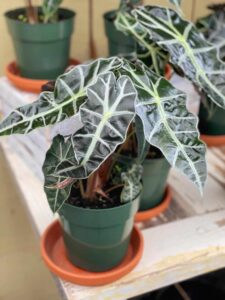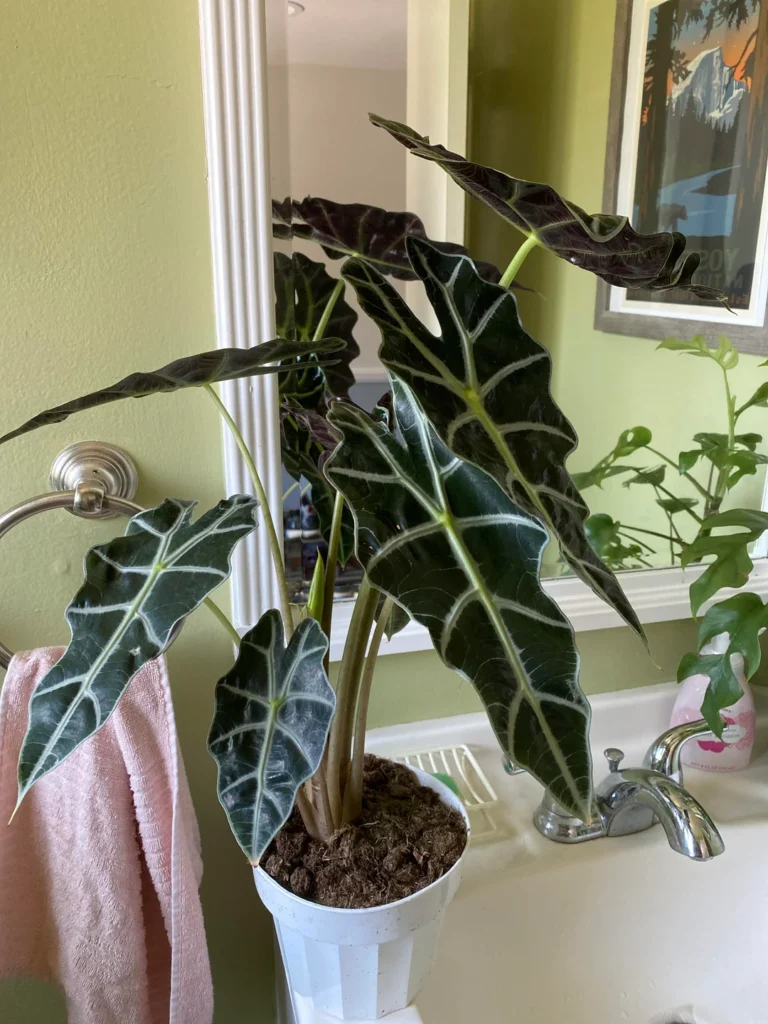Basic Information
The Alocasia Polly, also known as Alocasia x Amazonica or African Mask Plant, is a striking plant often seen in social media and garden stores. Its large, uniquely shaped leaves with prominent veins are quite eye-catching. As a tropical plant, the Alocasia Polly has specific care needs and might be challenging for beginners. However, mastering its care can pave the way for handling more complex plants.
This guide will highlight common mistakes in caring for an Alocasia Polly and provide practical tips for successful cultivation. Let’s dive into the key aspects of Alocasia Polly care.



Light
Alocasia Polly thrives in medium to bright, indirect sunlight. Direct sunlight can damage its leaves, so a spot with filtered light, like near an east-facing window, is ideal. A grow light can be an effective alternative if natural light is insufficient. Rotate the plant regularly to ensure even exposure and prevent it from leaning towards the light source.
Water
This plant prefers consistent moisture but is sensitive to overwatering. Water when the top few inches of soil are dry, ensuring thorough watering until it drains from the pot’s bottom. In winter, reduce watering frequency. Always empty the saucer to avoid standing water, which can lead to root rot.
Tip: Use lukewarm water for watering, as the soil and roots more readily absorb it.
Soil
Alocasia Polly needs well-draining, rich soil with organic matter. A mix containing perlite helps with drainage and moisture retention. Avoid soil that stays wet for long periods to prevent root rot. If using Leca, ensure proper hydration and oxygenation for the roots.
Temperature
The ideal temperature ranges from 18-25ºC. This plant dislikes cold drafts and sudden temperature shifts. Alocasia Polly can be placed outdoors in summer but should be brought in before temperatures drop.
Humidity
Alocasia Polly prefers high humidity levels, which can be achieved by using a humidifier, placing a pebble tray beneath the plant, or regular misting. This is particularly important in dry environments or during winter to prevent leaf curling or browning. A pro tip for naturally boosting humidity is to group your Alocasia Polly with other plants, creating a beneficial microclimate for all involved.
Pro tip: Grouping with other plants can naturally increase humidity levels around your Alocasia Polly.
Fertilizer
To keep your plants healthy during the growing season of spring and summer, it’s important to fertilize them every two weeks using diluted liquid fertilizer. In the fall and winter, when the plant’s growth slows down, reduce the frequency of fertilization. However, before fertilizing, make sure that the soil is moist to avoid root burn. It’s crucial to follow the recommended dilution rates to prevent over-fertilization, which can cause problems.
Tip: A balanced NPK fertilizer supports lush leaf growth but is always diluted to avoid root burn.
Growth Rate
Alocasia Polly is a moderate grower, with its growth rate depending on the care and environment provided. In ideal conditions, it can grow quite lush and vibrant, but it won’t outgrow its space rapidly. Understanding its growth patterns helps in planning space and pot size for the plant.
Pet Safety
This plant is toxic to both pets and humans when ingested, causing irritation and discomfort. It’s best kept out of reach of children and pets to avoid accidental ingestion.
Grow in Semi-Hydro
- Alocasia plants excel in Semi-hydroponics (LECA/Pon) due to their natural inclination for root growth and humidity.
- Successfully transitioning Alocasia to Semi-hydroponics is enhanced with a Nutrient Stagnant Wicking (NSW) setup.
- Alocasia roots adapt seamlessly to the water in LECA/Pon, with quick resolution of any root hair issues in NSW setups.
- Fertilizer includes a nutrient mix concentration of approximately 800-1000ppm.
- These plants are versatile in different temperature and humidity settings, thriving in controlled environments.
- Long-term care involves maintaining a constant water reservoir and performing occasional system flushes for sustained growth.
Tips
- Rotate the pot regularly for uniform light exposure.
- Remove spent flowers to redirect energy to foliage growth.
- Propagate through the division of rhizomes, ideally in spring.
- Keep the plant in a draft-free, warm location.
- If the plant enters dormancy in winter, reduce watering and withhold fertilizer until active growth resumes.
In conclusion, the Alocasia Polly is a stunning addition to any indoor garden, offering a tropical flair with its unique foliage. With proper care, it will flourish and bring a touch of nature’s beauty to your home.
Happy planting! 🌱


